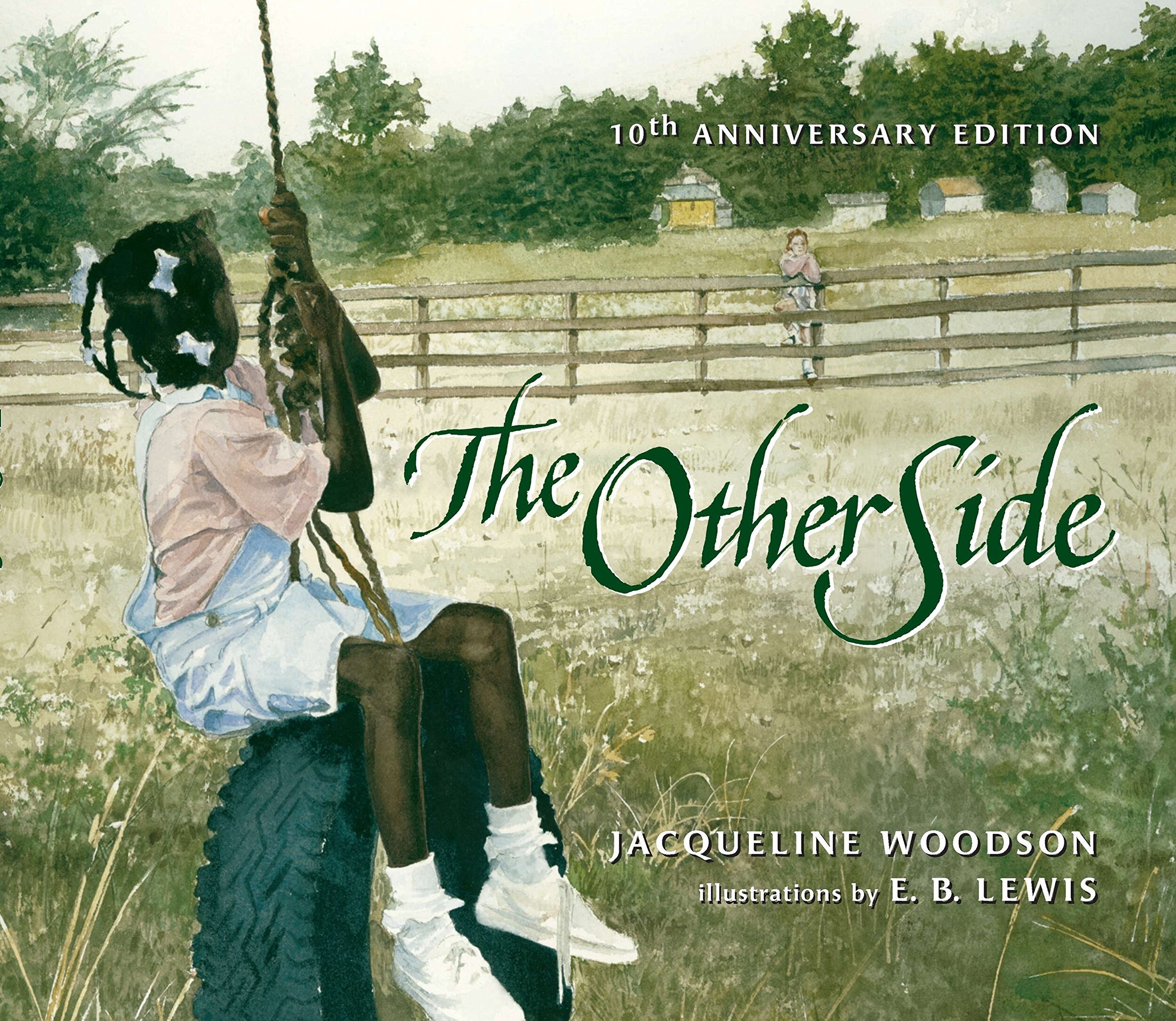
Segregation
The Other Side
“Clover's mom says it isn't safe to cross the fence that segregates their African-American side of town from the white side where Anna lives. But the two girls strike up a friendship, and get around the grown-ups' rules by sitting on top of the fence together.”
Freedom Summer
“Joe and John Henry are a lot alike. They both like shooting marbles, they both want to be firemen, and they both love to swim. But there's one important way they're different: Joe is white and John Henry is black, and in the South in 1964, that means John Henry isn't allowed to do everything his best friend is. Then a law is passed that forbids segregation and opens the town pool to everyone. Joe and John Henry are so excited they race each other there...only to discover that it takes more than a new law to change people's hearts.”
Grandmama’s Pride
“Six-year-old Sarah Marie, her mother, and her little sister travel down south to visit Grandmama in the summer of 1956. Grandmama makes every effort to shield her granddaughters from the prejudice that still plagues her town. But as Sarah Marie learns to read, she notices Grandmama’s town is filled with signs and rules that she’s never understood before. As Sarah Marie tries to make sense of the world around her, she’s left wondering if life in the South will ever change.”
White Socks Only
“When Grandma was a little girl in Mississippi, she sneaked into town one day. It was a hot day―the kind of hot where a firecracker might light up by itself. But when this little girl saw the "Whites Only" sign on the water fountain, she had no idea what she would spark when she took off her shoes and―wearing her clean white socks―stepped up to drink. Bravery, defiance, and a touch of magic win out over hatred in this acclaimed story by Elevelyn Coleman. Tyrone Geter's paintings richly evoke its heat, mood, and legendary spirit.”
Rosa
“Fifty years after her refusal to give up her seat on a Montgomery, Alabama, city bus, Mrs. Rosa Parks is still one of the most important figures in the American civil rights movement. This picture- book tribute to Mrs. Parks is a celebration of her courageous action and the events that followed.”
The Story of Ruby Bridges
“The year is 1960, and six-year-old Ruby Bridges and her family have recently moved from Mississippi to New Orleans in search of a better life. When a judge orders Ruby to attend first grade at William Frantz Elementary, an all-white school, Ruby must face angry mobs of parents who refuse to send their children to school with her. “
The Bus Ride
“Sarah and her mother ride the bus every day. There are lots of other people on the bus, but some passengers aren't allowed to sit in certain areas.
One day, Sarah decides to see what she's missing by sitting at the back of the bus. The moment she moves up front she sets off a commotion that reverberates furiously throughout the city.
The award-winning author and artist, William Miller and John Ward, poignantly portray a child who discovers the courage of her convictions. With its inspiring introduction by Rosa Parks, The Bus Ride is a timely reminder for readers of all ages that no act is too small when it comes to confronting injustice.”
Ruth and the Green Book
“Ruth was so excited to take a trip in her family's new car! In the early 1950s, few African Americans could afford to buy cars, so this would be an adventure. But she soon found out that black travelers weren't treated very well in some towns. Many hotels and gas stations refused service to black people. Daddy was upset about something called Jim Crow laws . . .
Finally, a friendly attendant at a gas station showed Ruth's family The Green Book. It listed all of the places that would welcome black travelers. With this guidebook―and the kindness of strangers―Ruth could finally make a safe journey from Chicago to her grandma's house in Alabama.”
Sit-In: How Four Friends Stood Up By Sitting Down
“Andrea Davis Pinkney uses poetic, powerful prose to tell the story of these four young men, who followed Dr. Martin Luther King Jr.'s words of peaceful protest and dared to sit at the "whites only" Woolworth's lunch counter. Brian Pinkney embraces a new artistic style, creating expressive paintings filled with emotion that mirror the hope, strength, and determination that fueled the dreams of not only these four young men, but also countless others.”
In addition to the titles above, you can browse book lists available at…








